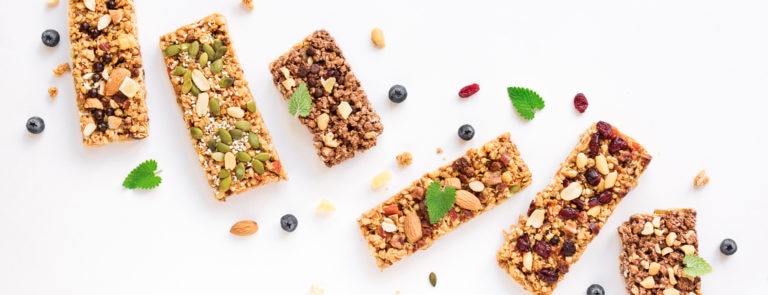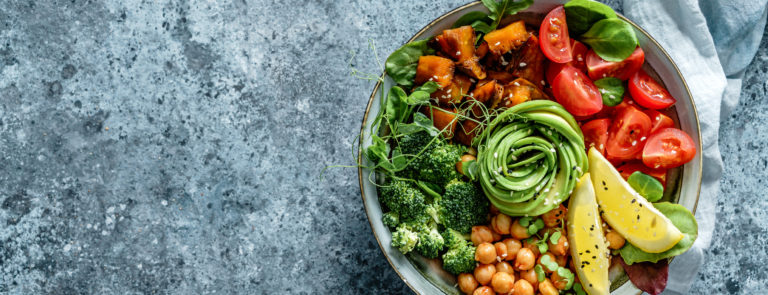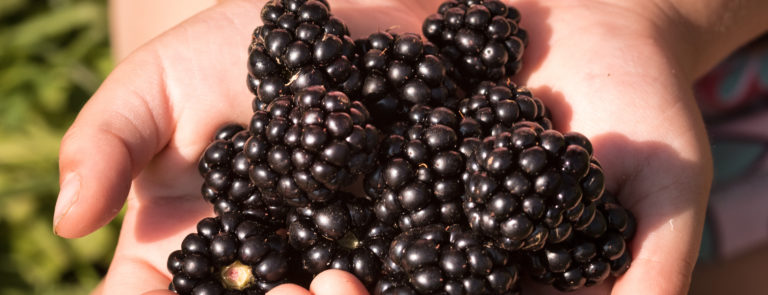20% off €35
Code:BAG
Cinnamon: benefits, dosage & side-effects

Cinnamon has been a popular cooking ingredient throughout history. Here’s what you need to know about cinnamon including its health benefits and dosage.
Summary
1Types of cinnamon
You are likely to see two varieties of the spice in shops. Below we'll take a look at Cassia vs Ceylon cinnamon to see how they compare...
29 benefits of cinnamon
The spice has been shown to support the body in a number of ways. Here are some of the most famous cinnamon health benefits...
3Taking cinnamon supplements
If you don’t really like the taste of cinnamon and shy away from foods and drinks containing it, you can still enjoy the benefits by taking it as a...
Is cinnamon good for you? Find out all about cinnamon, including what it does, cinnamon benefits and how much you might need.
What is cinnamon and what does it do?
Cinnamon is a spice derived from the inside bark of the Cinnamomum tree.1 When the bark dries, it curls into ‘quills’ or cinnamon sticks.2
This spice has been a popular cooking ingredient throughout history, with its use thought to date from Ancient Egypt. Christopher Columbus was among many explorers sent to search for the spice.3
Historically, cinnamon has been revered almost as much for its health properties as for its distinctive aroma and flavour.
Traditionally, it has been used as a breath-freshener because of its anti-bacterial effects.4
Cinnamon’s unique properties come from compounds like cinnamaldehyde (which provides its smell and flavour), as well as it’s essential oils.5
Summary
- Cinnamon is a sweet spice commonly used in cooking with many health benefits
Types of cinnamon
You are likely to see two varieties of the spice in shops.6
Known as ‘true’ cinnamon8, Ceylon is milder and sweeter, as just 50-63% of it’s essential oil is cinnamaldehyde.
Below we'll take a look at Cassia vs Ceylon cinnamon to see how they compare.
- Cassia cinnamon (Cinnamomum cassia)
Cassia cinnamon comes from the Cinnamomum cassia tree, which is also known as Cinnamomum aromaticum.
This type of cinnamon comes from Southern China but is now grown all across Southern and Eastern Asia.7 Consequently it is used a lot in Asian cooking and traditional Chinese medicine.
It tends to have a dark red/brown colour and the sticks themselves are usually thicker and have a rougher texture than Ceylon cinnamon. Around 95% of Cassia cinnamon’s oil is cinnamadehydle, which gives it that very strong and spicy flavour.
Cassia cinnamon is normally very cheap and is generally considered lower quality than Ceylon, which is why you’ll find it in many supermarkets – the everyman’s cinnamon, if you will!
- Ceylon cinnamon (Cinnamomum zeylanicum)
Known as ‘true’ cinnamon8, Ceylon is milder and sweeter, as just 50-63% of it’s essential oil is cinnamaldehyde. Ceylon cinnamon comes from Sri Lanka and some Southern parts of India. It’s made from the bark inside of the Cinnamomum verum tree. Its sticks are more tan-brown in colour with soft layers.
It’s less common and highly prized, which often makes it more expensive than its Ceylon sibling.

Which type of cinnamon is best?
It depends what you want to use it for.
Cassia cinnamon has a higher cinnamaldehyde content than Ceylon cinnamon – but most people prefer the taste of this Sri Lankan native.
If you’re on a budget, Cassia cinnamon tends to be cheaper than Ceylon cinnamon.
Summary
- There are two main types of cinnamon: Ceylon and Cassia
- People tend to prefer the taste of Ceylon but Cassia is cheaper
9 benefits of cinnamon
The spice has been shown to support the body in a number of ways. Here are some of the most famous cinnamon health benefits.
What does cinnamon do in the body?
Cinnamon contains important plant chemicals, including cinnamaldehyde and quercetin, that act as potent antioxidants, which means they help protect cells from damage from free radicals, unstable molecules that, in excess, can lead to disease.9
In fact, in a 2004 study of seven dessert spices, cinnamon ranked number one in terms of antioxidant activity.10
Cinnamaldehyde may work to block the release of inflammatory chemicals in the nervous system,11 such as cyclooxygenase-2 and nitric oxide,12 curbing chronic inflammation, which has been linked to heart disease, stroke and other diseases.
In a 2015 study in Food & Function, researchers reported that Ceylon cinnamon was one of the most powerful anti-inflammatory foods of the 115 tested.13
Cinnamon has been shown to inhibit the growth of potentially harmful bacteria.14
Cinnamon can also curb the growth of yeast: in a 2013 Indian study, researchers reported that cinnamon in toothpaste helped to reduce symptoms of candida, a type of yeast that causes oral thrush.
Researchers think that cinnamaldehyde and other antimicrobial compounds in cinnamon rupture the membrane of bacterial and fungal cells.15
A 2017 Romanian study reported cinnamon has a number of important cardiovascular benefits, including:16
- Reducing triglycerides – a type of fat found in blood that may raise your risk of developing coronary artery disease
- Lowering total cholesterol levels
An earlier 2003 study in Pakistan found that giving participants with diabetes 1g, 3g or 6g of cinnamon a day for 40 days reduced triglycerides, total cholesterol and also ‘bad’ LDL cholesterol levels.17
People have been using cinnamon for years as an alternative to mint for fresh breath.
Bad breath, also known as halitosis, is a very common condition. Solobacterium moorei is a bacterium associated with bad breath, and it turns out that cinnamon is great for tackling it.
One study found that cinnamon oil may be a good addition to oral hygiene products for controlling bad breath.
It was found to inhibit growth of the bad-breath-causing bacteria as well as reduce its production of hydrogen sulfide.18
Cinnamon has been used by people for a long time to help relieve digestive discomfort.19
One study conducted by researchers from the RMIT University School of Engineering in Melbourne, Australia found some promising scientific results.
They found that including cinnamon in pig’s meals reduced gas formed in their stomachs and helped to keep them cool, as well as improve their overall health.20
One of the researchers commented that ‘cinnamon appeared to protect ‘the walls of the stomach and small intestines’ and believed the results could be transferable to humans.
Cinnamon oil does have a lip plumping effect, but this is due to it irritating your lips. When your lips are irritated, the blood rushes to the surface of your lips – causing them to look ‘puffy’ or inflamed.
As long as you are not allergic, this should be safe and fine to do in a pre-made solution that has been tested for safety. You can find recipes online, but proceed with caution.
You may have already seen cinnamon oil in beauty products like face scrubs and moisturisers, but what does it do for the skin?
Due to its anti-fungal, antibacterial and antioxidant properties, it may help to kill bacteria on the skin. It can also help improve blood flow to the skin’s surface, which can help keep the skin moisturised.
It can also help exfoliate the skin and get rid of dead skin cells.
The main benefit of cinnamon? It tastes and smells amazing!
Whether it’s a mere sprinkle in your latte or spoonful into your cake mix, ground cinnamon has a warming, comforting and natural taste that most love.
From spicing up your life in the kitchen to helping to keep your heart healthy, cinnamon has plenty of different benefits
What are the uses of cinnamon?
There are a variety of ways to use cinnamon, here are some of the most popular.
Lots of delicious foods and drinks feature this sweet spice, like:
- Cinnamon rolls
- Hot cross buns
- Baklava
- Apple pie
- Apple crumble
- Rice pudding
- French toast
- Churros
- Pumpkin pie
- Chinese food (it’s a main ingredient in five spice powders)
- Cinnamon tea
- Eggnog
- Golden milk
Cinnamon tea is naturally sweet, soothing, and oh so easy to make.
You can make cinnamon tea fresh yourself by:
- Bring 1L of water to the boil.
- Add in 1 cinnamon stick, broken up into small pieces.
- Strain the tea into a mug using a sieve or tea strainer.
- Stir in honey, maple syrup, or any other sweetener if you like it sweet.
Mixing 2 tablespoons of honey with 1 teaspoon of cinnamon is perhaps one of the quickest homemade face masks you can whip up!
Simply apply the mixture evenly all over your face (avoiding the eyes) and leave it for 10-15 minutes before rinsing off with lukewarm water.
Love a good scrub? Why not try making your own cinnamon sugar scrub?
Here’s how:
- Mix 250g of coconut oil with 250g of sugar until the mixture gets creamy.
- Add in 1 teaspoon of ground cinnamon and add in up to 250g more sugar until it reaches the consistency you want.
- Use it to scrub away dead skin cells and leave your skin nice and soft.
- Store in a sealed container in a cool, dark place, ready for next time.
Cinnamon is mostly used in cooking and baking, but also features in homemade beauty treatments like facemasks
Taking cinnamon supplements
If you don’t really like the taste of cinnamon and shy away from foods and drinks containing it, you can still enjoy the benefits by taking it as a supplement
There are a few different types of cinnamon supplements you can take, like:
- Cinnamon tablets
- Cinnamon capsules
- Cinnamon sprays
- Cinnamon sticks
- Cinnamon powder
Summary
- A cinnamon supplement may be beneficial for those who don’t like the taste
How much cinnamon is safe to take?
In general, cinnamon is safe, but it’s important to know which type of cinnamon you are taking:

Cassia cinnamon – each teaspoon of this cinnamon contains 5g of coumarin, a plant compound that can damage the liver if taken in large amounts.21 For this reason, the European Food Safety Authority has set safe daily limits22 – with up to 2g (1tsp) of cinnamon cassia recommended daily.23
Ceylon cinnamon – this contains only trace amounts of coumarin, so can be consumed in larger amounts of up to 5g (2.5tsp) a day.24
Avoid taking cinnamon supplements if you are:
- pregnant or a child – it hasn’t been proved safe25
- taking medications that can affect the liver, such as paracetamol or statins, or other prescribed medications, such as blood-thinners or diabetes drugs
Summary
Cinnamon and cinnamon supplements generally safe for most, with the exception of pregnant women, children and those taking certain medications
What are the side-effects of taking cinnamon?
Possible cinnamon side effects include:26
- Liver damage (if cassia cinnamon is consumed in excess and for long periods)
- Mouth sores
- Low blood sugar
- Irritation of the throat
Summary
- There are a few potential side effects of cinnamon, but they are quite rare.
The final word
- Cinnamon is not just for baking cinnamon swirls… it has a whole host of other benefits for the human body
- From helping freshen breath to supporting heart health, this spice has more to it than meets the eye
- You can enjoy cinnamon in food, tea or in a supplement, whichever works best for you
- https://www.healthline.com/nutrition/10-proven-benefits-of-cinnamon
- https://www.webmd.com/diet/health-benefits-ceylon-cinnamon
- https://www.history.com/news/cinnamons-spicy-history
- https://www.ncbi.nlm.nih.gov/pmc/articles/PMC4003790/
- http://www.chm.bris.ac.uk/motm/cinnamaldehyde/cinnh.htm
- http://www.fao.org/3/x5326e/x5326e07.htm
- https://www.history.com/news/cinnamons-spicy-history
- https://www.webmd.com/diet/health-benefits-ceylon-cinnamon
- https://www.ncbi.nlm.nih.gov/pmc/articles/PMC4003790/
- https://www.ncbi.nlm.nih.gov/pubmed/25629927
- https://pubmed.ncbi.nlm.nih.gov/25629927/
- https://www.ncbi.nlm.nih.gov/pmc/articles/PMC4003790/
- https://www.ncbi.nlm.nih.gov/pmc/articles/PMC4003790/
- https://www.ncbi.nlm.nih.gov/pubmed/17134518
- https://www.ajesjournal.com/PDFs/2013-2/4.pdf
- https://www.ncbi.nlm.nih.gov/pubmed/28887086
- https://pubmed.ncbi.nlm.nih.gov/28743086/
- https://www.ncbi.nlm.nih.gov/pubmed/14633804
- https://www.ncbi.nlm.nih.gov/pmc/articles/PMC4466762/
- https://www.nature.com/articles/srep33387
- https://www.healthline.com/nutrition/side-effects-of-cinnamon
- https://www.efsa.europa.eu/en/efsajournal/pub/104
- https://www.ncbi.nlm.nih.gov/pubmed/28887086
- https://www.ncbi.nlm.nih.gov/pubmed/28887086
- https://parenting.firstcry.com/articles/cinnamon-in-pregnancy-benefits-and-risks/
- https://www.ncbi.nlm.nih.gov/pubmed/28887086
The advice in this article is for information only and should not replace medical care. Please check with your GP or healthcare professional before trying any supplements, treatments or remedies. Food supplements must not be used as a substitute for a varied and balanced diet and a healthy lifestyle.
Last updated: 23 July 2021



